Father: John Wilson Brook, a manufacturer; Mother: Lilian [Charlesworth] Sometimes used the surname 'Brooke' At the age of 13 he, his parents and his elder sister Violet were 'boarders' at 17 Farcliffe Terrace, Bradford; the landlady was a Mrs Florence Wood. "He joined the Royal Field Artillery on August 20, 1914, at the age of 16, obtained his commission soon afterwards, and, despite a couple of wounds, served five years in France and India." - Flight
RAeC Certificate 11595 dated 29 Oct 1933, taken at York County Aviation Club Address in 1933: 6 Lancaster Park Rd, Harrogate, Yorks
"Restored to his family, he remained a normal civilian until Yorkshire began to build and fly sailplanes and gliders. These occupations kept him mildly diverted until the approach of his 37th birthday. Then he began to yearn for more horse-power. The York County Aviation Club at Sherburn-in-Elmet offered a likely fulfilment of this secret ambition. So, in August, 1933, Brook placed himself in the hands of Instructor Cudemore, and after four hours' instruction became a soloist with serious designs on the MacRobertson Handicap, for which Phillips and Powis have built him the first of their Miles 'Falcons'. What happened between last autumn and this spring is now almost historic. Brook bought the "Puss Moth" G-ABXY (Heart's Content) in which the Mollisons had crossed the Atlantic, and, with a total of 43 hr. in his logbook, pushed off solo from Lympne to survey the route to Melbourne. That was on March 28, 1934, at 5.20 a.m.
By noon the incident had closed. Describing it a few days later Brook said that, while flying through very dirty weather over France, he was forced down from 12,000 ft. by ice formation on the wings, and, before he knew how or why, the side of an unsuspected mountain was rushing up at him out of the murk. Guided by some uncanny sixth sense, he brought off a bloodless landing on the mountain proper. The scene of this epic of the air was Genolhac, in the Cevennes. With some local help he salvaged the "Gipsy Major," brought it back to England, and has had it installed in Heart's Content II. Brook's next attempt on the Australian record will not be solo. If expectations are realised, he will be accompanied by two lady passengers" - Flight
-------------- The 1934 MacRobertson Race --------- He just scraped up the minimum 100 hrs solo flying time required to enter the 1934 England-Australia 'MacRobertson' Race, and ordered a newly-designed Miles M.3 Falcon from the Phillips and Powis factory. G-ACTM was the first Falcon to fly, on 12 Oct 1934. A month before the start of the race, however, it didn't have any seats, and was in "a very unfinished condition". Harold was not impressed by "those fools at Reading ... this is not the first time they have omitted to do something". The race started on the 20 Oct 1934; he and his passenger, Miss Ella Lay, made it all the way to Australia but he was disqualified for 'arriving too late'. He then flew back from Australia in record time; you might like to see him talk about his record-breaking flight (on the other hand, you may have some drying paint that needs watching); if so, click here:
[He is described as 'an accountant - but see later...]
"Last Sunday afternoon, at 3.55 p.m., the original Miles "Falcon" landed at Lympne, having flown in 7 days 19 hr. 50 min. from Darwin, North Australia, with Mr. H. L. Brook, of Harrogate, at the controls. The pilot thus beat the unofficial "solo" record of Mr. C. J. Melrose by 13 hr. 10 min., and the officially recognised performance of Mr. J. A. Mollison by 1 day 2 hr. 25 min. The shortest time for the Australia-England trip is still,of course, the 6 days 16 hr. 10 min. of Cathcart Jones and Waller in a "Comet". After leaving Darwin at 5.30 a.m. on Sunday, March 24 (Australian time), Mr. Brook's time-table was as follows:- Sunday night, arrived Rambang; Monday, Penang; Tuesday,Rangoon; Wednesday, Calcutta; Thursday, Karachi; Friday,Athens; Saturday, Rome; Sunday, Marseilles (9.25 a.m.) ; Lympne (3.55 p.m.). The Timor crossing, he told a member of the staff of Flight, was "rotten", with rain, low clouds and heavy head winds. On the trip from Penang he landed on the delta near Calcutta. Over the Sundarbans low clouds and darkness caused him to take this measure rather than to fly on, possibly missing Calcutta, and, as he put it, perhaps making a crash landing through shortage of petrol. Perhaps the worst section of the trip was that between Athens and Rome, particularly the portion over the channel of Corfu, where a gale was encountered. At Brindisi Mr. Brook was advised not to proceed, but he pushed on and crossed the Apennines in a snowstorm. And what of the man himself? He is a thirty-eight-year-old Yorkshireman, who, despite the newspaper stories, has never been an accountant in his life. When he was younger he indulged in motor racing and later built a few sailplanes and gliders. Then he joined the York County Aviation Club and went solo after four hours' instruction. He next bought Mr. J. A. Mollison's "Puss Moth" Heart's Content, and set out for Australia to survey the route to Melbourne, for he had decided to enter the MacRobertson Handicap. But ice formation forced the "Puss Moth" down on a mountain side in the Cevennes. Neither Brook nor the "Major" (which, it should be remembered, had already been flown over the South Atlantic) was rendered hors de combat, however. The engine was salvaged and Brook brought it back to England, where it was installed in the first of the Miles "Falcons" which then was fitted with extra tanks for the race. During the event it carried a lady passenger and a large helping of appalling luck (no connection is suggested between the two facts!) Suffice it to say that the Australian trip, a large portion of which was made in easy stages, took about twenty-six days. During his stay "down under," Brook worked until the "Falcon" and its engine were in tip-top condition before starting his almost unheralded flight. Of travelling in the "Falcon" he says that, compared with flying in an ordinary aeroplane with open cockpits, it was" like travelling in a saloon car instead of on a motor cycle". The veteran "Gipsy Major" was run throughout the flight at 2,100 r.p.m." - Flight
He briefly became a rather unlikely celebrity, endorsing products such as Terry's Springs: "H. L. BROOK writes to TERRY'S Dear Sirs, I should like to take this opportunity of congratulating you on the excellence of your springs in my Gipsy 6 Engine. In a record-breaking flight of this description the engine has to be run for long periods in extreme temperatures, and at a higher rate of revolutions than normal, and for a valve spring to break would spell disaster. I had never at any time any fear of this happening with your springs, and they are now at the end of the flight in just as good condition as they were at the start. Yours faithfully, (signed) H. L BROOK." ------------- In 1935 he tried to beat the England to the Cape record in his Falcon, but had a 'mild crash' while landing after dark at Mersa Matruh, about 260 miles E.N.E. of Cairo. He was uninjured.
m. 26 Mar 1936 in Harrogate, Madge Marion [Edwards]
He then owned G-ADZO, a 1935 Percival D.3 Gull Six which competed in the King's Cup for 1936, coming 7th out of 26 piloted by Roly Falk. Amy Johnson used it to break the England-Cape Town double journey record in 1936, and Harold himself broke the Cape Town to England record the following year. It was scrapped in May 1938, after he made a forced landing on a sandbank in the Wash, after running out of fuel, on a flight from Skegness to Norwich:
"Harold, (who recently acquired a garage near Snitterfield, Warwickshire) said, "Just think, one does long-distance flights and nothing happens, and then over a place like the Wash a silly thing like this occurs". - Coventry Evening Telegraph - Friday 27 May 1938 Despite Harold saying that it was insured for £1200, its resulting value of £32 19s 7d was eventually divided between the 22 Lynn fishermen who salvaged it.
In 1936, he flew to Cape Town in his Hillson Praga G-ADXL (previously OK-PGC). Mercifully, there don't appear to be any interviews about this one. The aircraft was sold in South Africa and re-registered ZS-AHL, and in 1953 converted to a glider.
prev. RAF Pilot Officer, Administrative and Special Duties Branch in May-October 1940. Postings:
"NEWS from Southern Rhodesia reports the arrival there of Mr. Harold Leslie Brook, formerly of Lancaster Park Road, Harrogate, who became world famous in 1935 by breaking the record In a solo flight from Australia to England, and two years later broke the record created by the late Amy Johnson In a solo flight from Cape Town to England. "He has settled In Southern Rhodesia with his wife and three children", states the report. "He has bought a ranch of 12,000 acres in the Midlands where, in addition to raising cattle, he plans to grow a little tobacco and quite an acreage of sorghums." Mr. Brook, who is 54, has been farming in South Devon for the past 10 years, and decided to settle in Southern Rhodesia because, to quote his own words, "my wife and I think our three children - there are two girls aged 12 and eight and a boy of six - will have a better future here than they would in England." The flight of which Mr Brook was most proud was the one he made from England to Cape Town in 1936 to demonstrate the merits of ultra-light aeroplanes. It took 16 days 4½ hours in a baby 'plane fitted with a two cylinder motor cycle engine, the retail price of which then was only £385. It was designed for short trips of from 300 to 400 miles, but he covered the 8,600 miles at an average fuel consumption of 33 miles per gallon. When referring to the breaking of records on one occasion said: " I do not think they serve any useful purpose. It is really only a question of the machine. Fast machines will continue to clip hours off records." Interesting to recall that he flew from London to Harrogate in 1937 with the news reels of the Coronation." - Yorkshire Post and Leeds Intelligencer - Monday 08 September 1952
d. 1965 ? * ATA file not seen |
- Details
- Hits: 1364


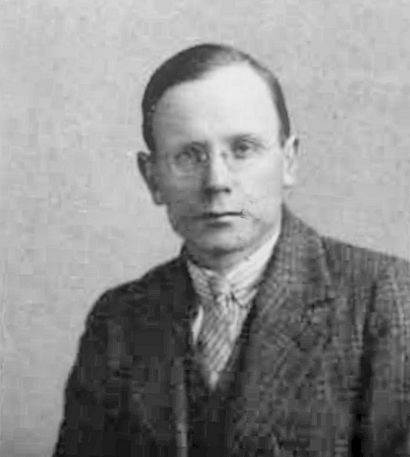 1933
1933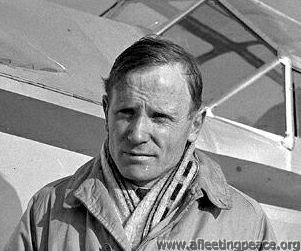 1934
1934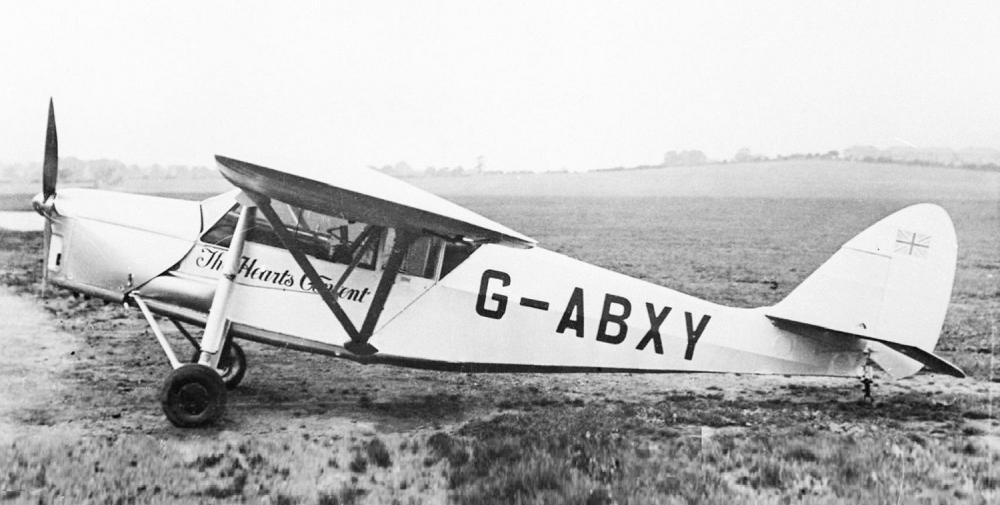
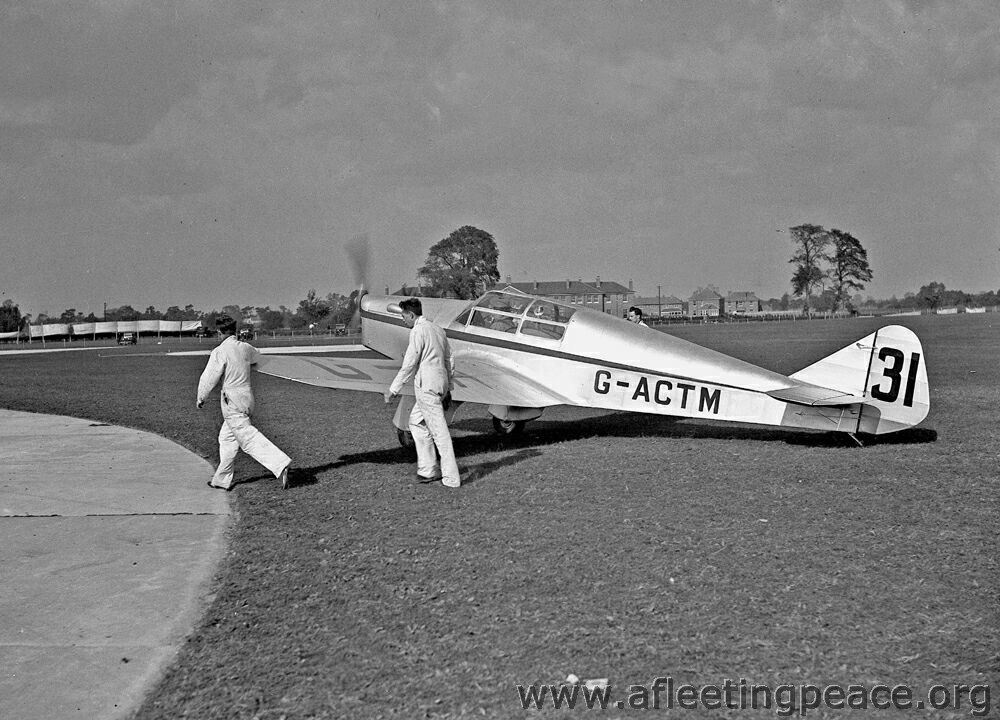

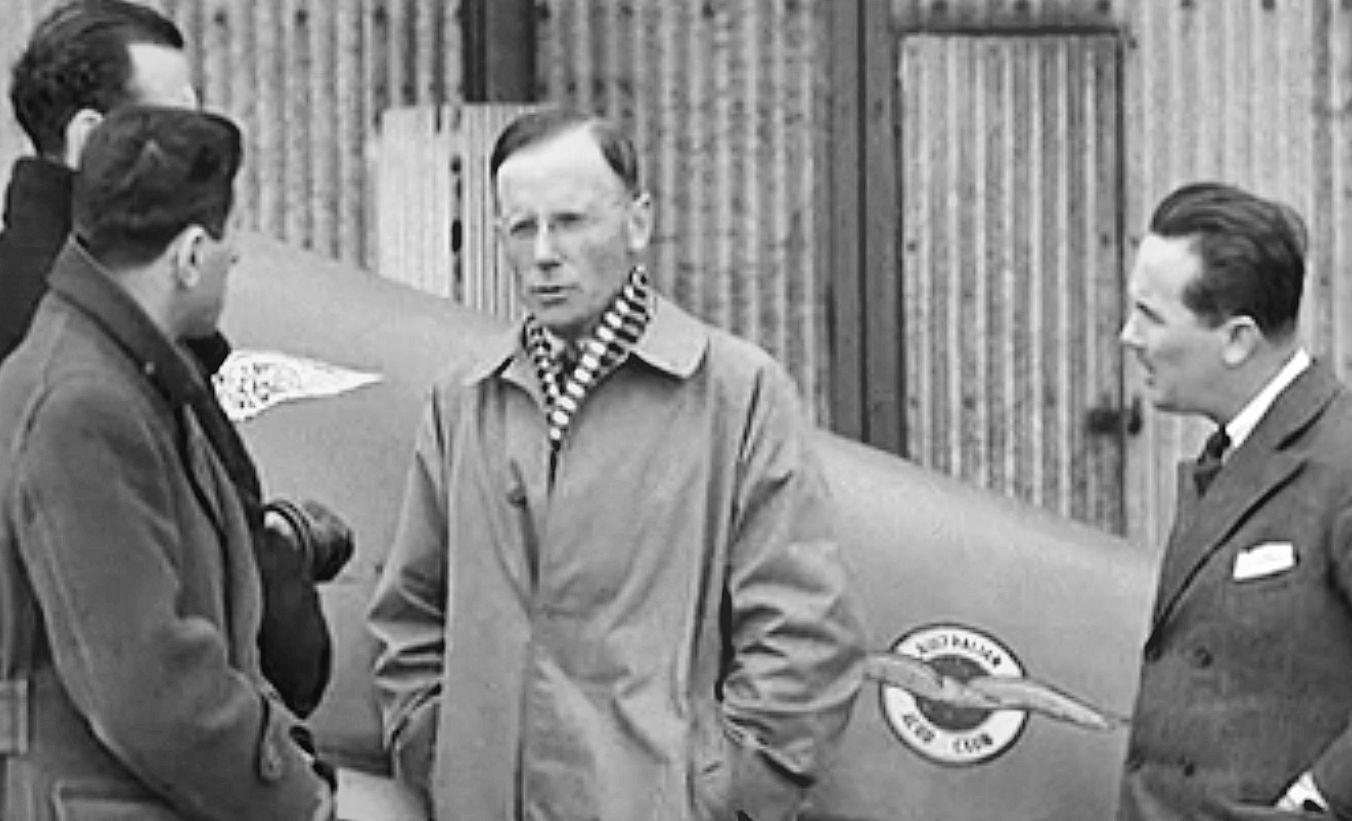
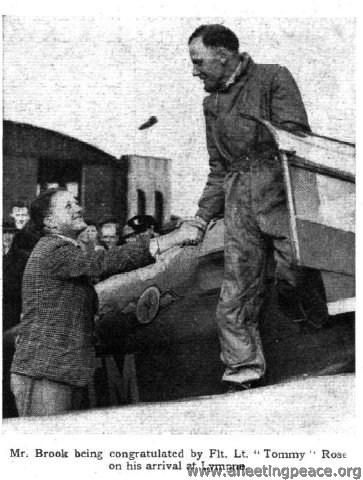
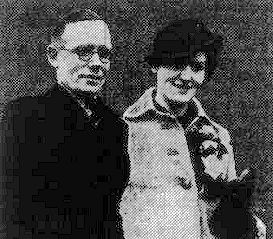 Yorkshire Post
Yorkshire Post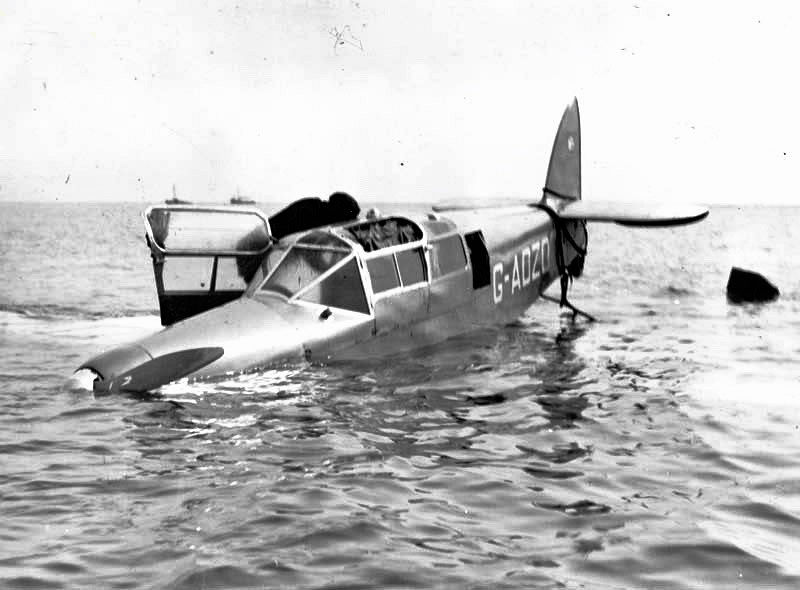
 (similar to this one)
(similar to this one)